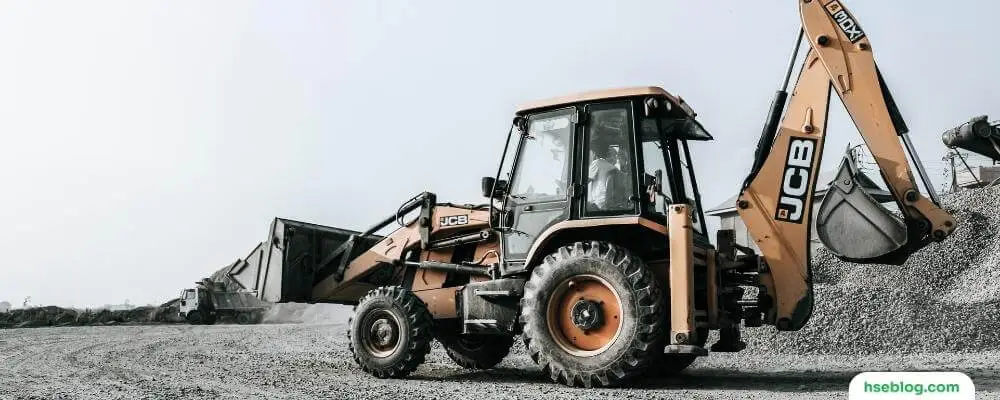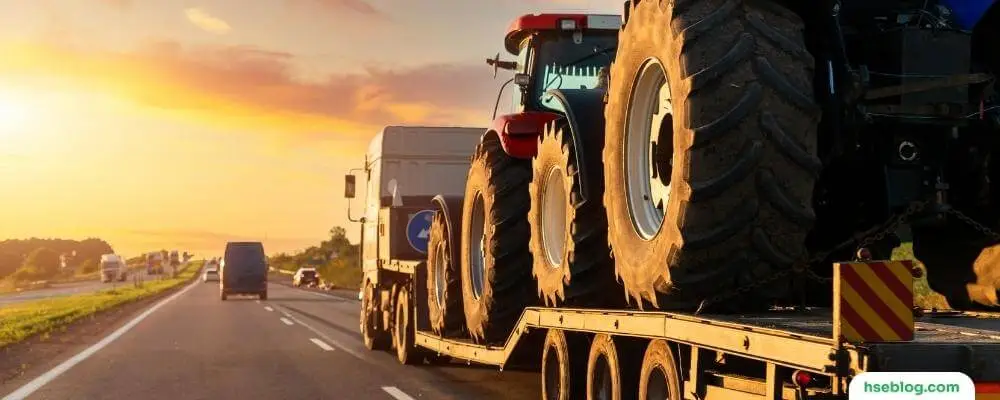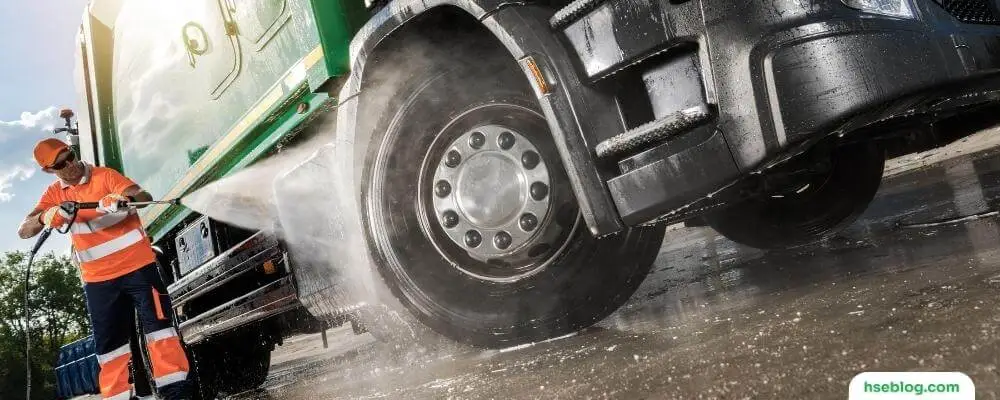There are many types of hazards that vehicle operations can cause. Some of these hazards are more common than others, but they can all be dangerous if not handled correctly. In this blog post, we will discuss the types of hazards caused by vehicles: environmental, mechanical, physical and human.
A hazard is a potential source of harm or adverse health effects on a person or the environment. Hazards can be either physical, chemical or biological agents of disease. Potential hazards posed by vehicle operations include crashes, fires, and exposure to hazardous materials.
Vehicle crashes are the leading cause of death and injury among children and young adults. In 2016, nearly 1200 children under the age of 15 were killed in vehicle crashes, and over 176,000 were injured. Most of these crashes occurred while the child rode as a passenger in a car or SUV.
Fires are another hazard posed by vehicles. In 2016, there were over 115,000 vehicle fires in the United States, resulting in over $1 billion in property damage. These fires can be caused by various factors, such as engine problems, electrical faults, and human error.

Vehicle Movement Hazards and Control Measures
Many hazards are associated with moving vehicles, both to the driver and others. Here are some of the most common hazards:
1. Driving Too Fast
Driving too fast is one of the most common hazards on the road. It is a major contributing factor to accidents and injuries. It is also illegal in most states. Driving too fast makes stopping or turning in time difficult to avoid an obstacle. It also increases the chance of losing control of the vehicle. Driving too fast makes it more difficult to see potential hazards on the road.
Driving too fast, Often associated with driver error – is a major cause of vehicle collisions and overturning. Driving too fast is worsened by movements across uneven ground, sloping surfaces and around bends. Loads may move due to abnormal movements and may fall from vehicles. Braking when driving too fast may be ineffective and hazardous on wet, icy or slippery surfaces.
2. Reversing
Reversing a vehicle can be dangerous and hazardous to the driver and pedestrians. If you must reverse, do so slowly and carefully. Look around for people or objects in your path, and be prepared to stop if necessary.
Reversing can be difficult to do properly, so it’s always best to avoid it if possible. If you absolutely must reverse, take your time and be extra cautious. Look carefully for any people or objects in your way, and be ready to stop if necessary. You can help make reversing safe for everyone involved with some care and attention.
3. Operation of Machinery
While technological advances have made many vehicles and machinery much quieter than in the past, this can pose a hazard to pedestrians and other drivers. If a person cannot hear a vehicle approaching, they may not be able to get out of the way in time and could be seriously injured or killed.
Several measures can be taken to help mitigate this hazard. For example, pedestrians and other drivers should know the potential dangers of silent vehicles and machinery. In addition, operators of such vehicles and machinery should take extra care to ensure they are visible to others. Finally, appropriate signage should be in place to warn people of the dangers in areas where silent vehicles and machinery are in use.
Despite the dangers, silent vehicles and machinery can boom in industry and commerce. They can continue to be used safely and efficiently with the proper precautions.

4. Poor Visibility
Poor visibility is one of the leading causes of vehicle-related accidents and injuries. Poor visibility can have tragic consequences, whether due to loads blocking the driver’s view, wide or long vehicles obscuring vision, or simply reversing into an obscured area.
Entrance and exit points are other major sources of visibility issues. These areas can create blind spots and changes in light levels, making it difficult for drivers to see what’s ahead.
To avoid accidents, it’s important to be aware of the potential hazards of poor visibility. When driving, take extra care when approaching or leaving obscured areas, and be prepared to stop if necessary. If you are reversing, be sure to have someone outside the vehicle who can guide you. And always look for potential hazards, even if they are not immediately obvious.
5. Loading
No matter what type of vehicle you are loading, there is always the potential for an accident. If you manually lift items into a truck, you risk strain injuries from lifting. There is potential collision damage if you use a forklift to load a flatbed truck.
It’s important to take precautions when loading any vehicle to minimize the risk of an accident. Make sure you are using the proper lifting techniques when manually lifting items. When using a forklift, be sure to know the weight and size limits of the truck bed, as well as the capabilities of your forklift. These precautions can help ensure a safe loading process and avoid potential accidents.
6. Overloading
Overloading a vehicle can create several hazards. The most significant risks are associated with destabilizing the vehicle, which can lead to accidents. Other risks include driver error and a lack of knowledge about the vehicle’s capabilities.
To avoid these hazards, it is important to ensure that the load is balanced and within the safe working limit of the vehicle. Drivers should also be aware of the vehicle’s capabilities and limitations and should take care to avoid overloading it.
7. Unloading
Vehicle movement during unloading can create significant hazards for workers. For example, if a vehicle tips over while being unloaded, the material being unloaded can fall on and injure nearby workers. Similarly, if a worker is struck by the material being unloaded, they can be seriously injured or killed.
To avoid these hazards, it is important to carefully plan unloading operations and to take precautions such as positioning workers in safe areas and using warning signs and signals. Additionally, workers should be properly trained in how to safely unload vehicles.
If you are planning on performing any kind of unloading operation, be sure to keep these safety tips in mind to help keep everyone safe.

8. Securing and Sheeting
When workers have to climb onto a vehicle to secure the load, they are exposed to the risk of being hit by the vehicle if it moves unexpectedly. This can happen if the driver does not see them or the vehicle slips or slides.
This is a particular hazard when loading and unloading road tankers, as they are often slippery. If the driver starts to move the tanker before the workers are clear, they could be dragged along with it or crushed between the tanker and another object.
Always ensure you know where the vehicle is and that it will not move before you start to work. Ask the driver to move the vehicle away if you are in doubt.
When sheeting a load, always ensure the sheets are properly secured. If they come loose, they could blow back and hit you or blow off entirely and cause danger to other road users.
9. Coupling
When vehicles are attached to trailers or other towed equipment, there is potential for collision and crushing. This is especially true when the vehicle is backing up. Vehicle operators should be aware of this hazard and take precautions to avoid it.
One way to avoid this hazard is to use a spotter. A spotter stands outside the vehicle and guides the operator as they are backing up. The spotter can help direct the operator around obstacles and ensure the trailer is Coupling correctly.
Another way to avoid this hazard is to use mirrors. Vehicle operators should check their mirrors before they start to back up. This will help them see if there are any obstacles in the way. Vehicle operators should be aware of this hazard and take precautions to avoid it.
10. Maintenance Work
Maintenance work can be a vehicle hazard. If mechanics must access various vehicle parts, they may have to work at height or under the vehicle. This can be dangerous if the vehicle is not properly secured. Always follow safety protocols and ensure the vehicle is secure before starting maintenance work.

Conclusion
Vehicle movement hazards pose significant risks to both drivers and pedestrians. Awareness of these hazards and implementing appropriate control measures to minimize potential accidents and injuries is crucial. Some common hazards discussed in this blog post include driving too fast, reversing, operating machinery, poor visibility, loading and unloading, overloading, securing and sheeting coupling, and maintenance work.
To address these hazards, various control measures can be implemented. These may include adhering to speed limits and driving cautiously, avoiding unnecessary reversing and utilizing spotters when necessary, ensuring visibility through proper lighting, mirrors, and warning signs, following safe loading and unloading procedures, avoiding overloading and maintaining proper weight distribution, securely coupling vehicles and using spotter assistance, and adhering to safety protocols and securing vehicles during maintenance work.
By promoting awareness, providing proper training, and implementing these control measures, we can significantly reduce the risks associated with vehicle movement hazards. It is essential for drivers, pedestrians, and workers involved in vehicle operations to prioritize safety, follow guidelines, and remain vigilant to ensure a safe and secure environment for everyone.

